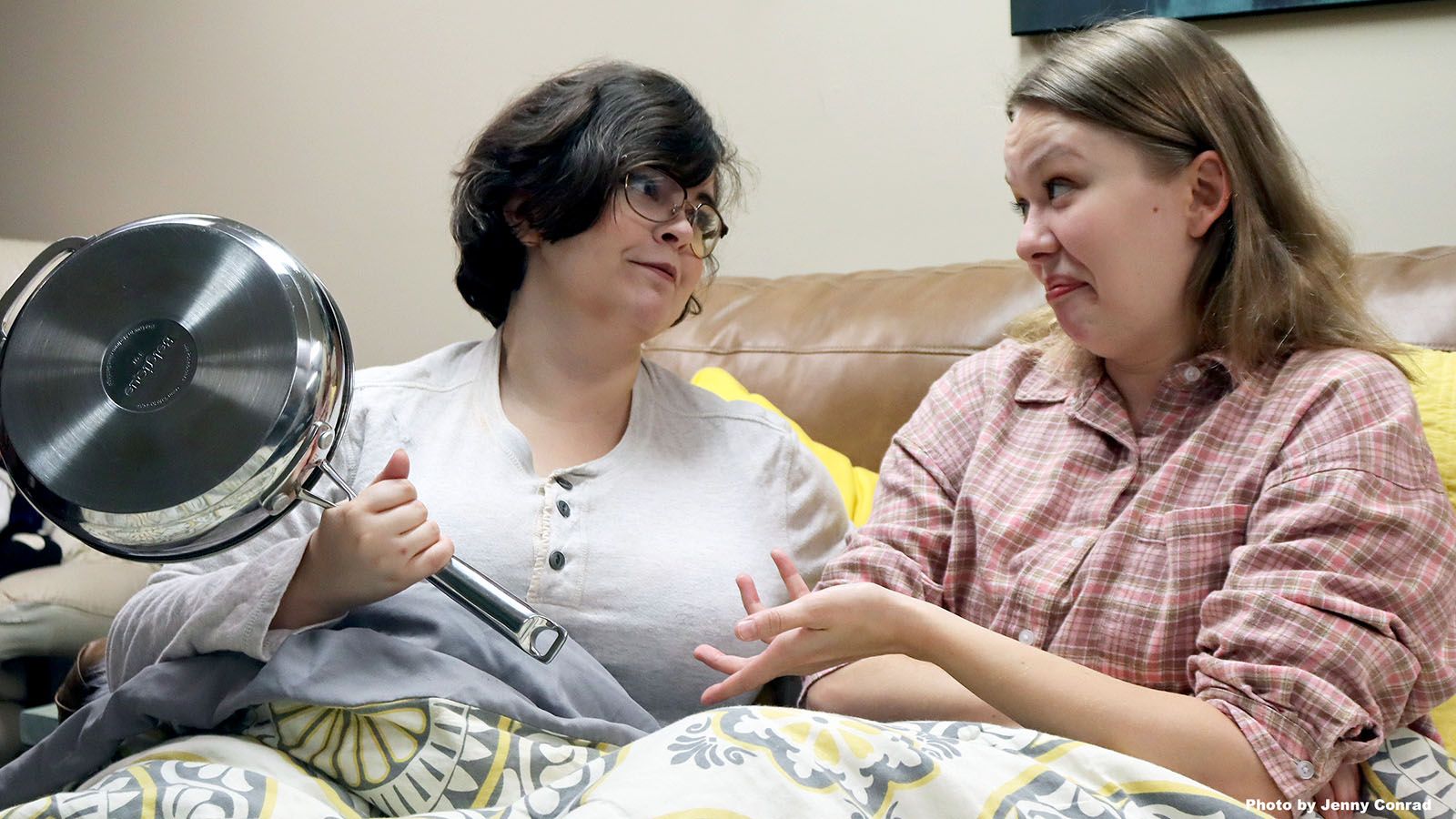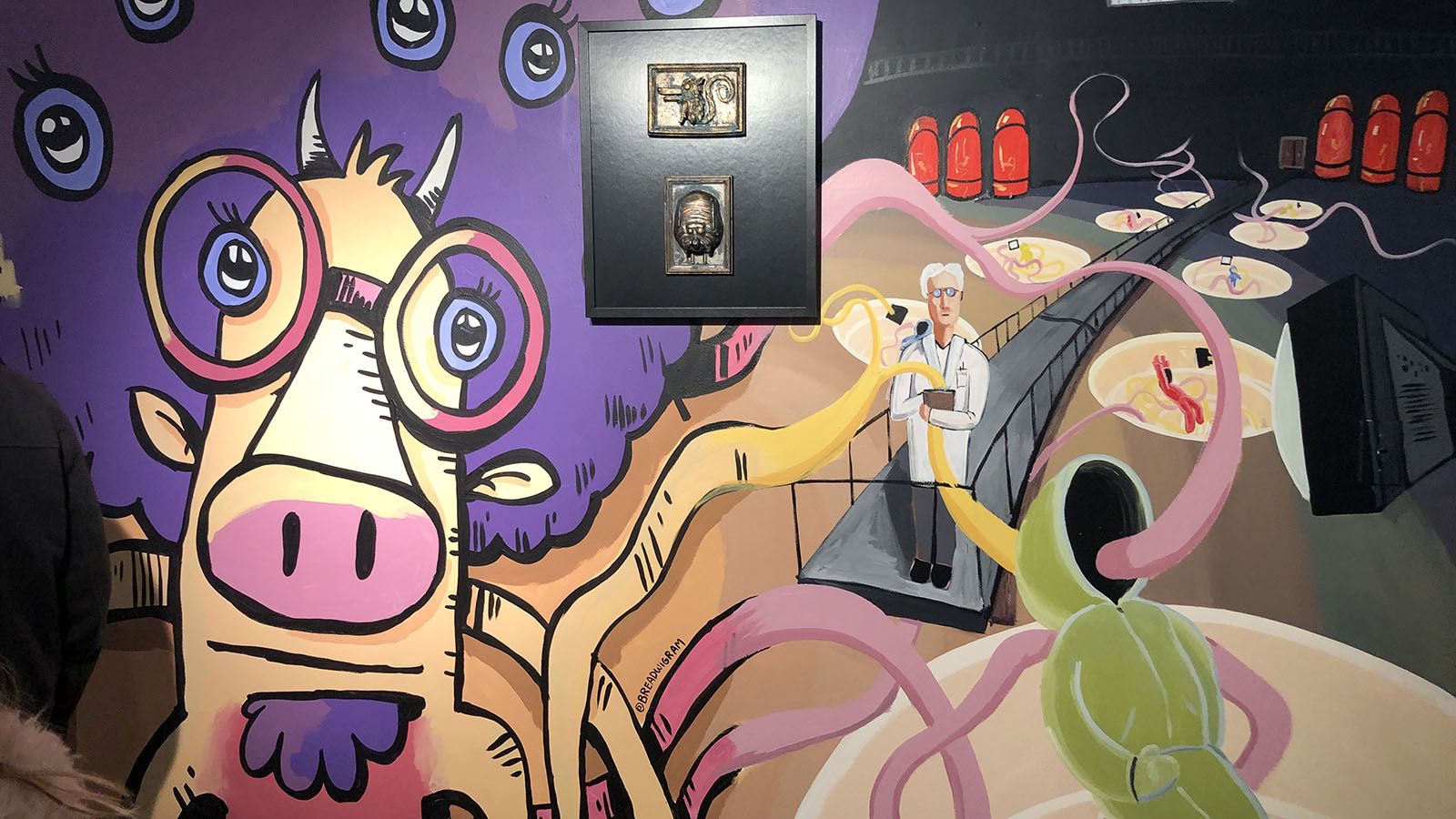In every relationship, there is a side that is shown to the world and a side that is kept at hidden behind the closed doors of bedrooms, reserved for pillow talk and speculation. Generally the two are kept separate.
Playwright Alan Aykbourn blows this idea apart in his play Bedroom Farce!, making its Fort Wayne premiere Aug. 18-20 and Aug. 25-27 at First Presbyterian Theater.
Setting the stage
Bedroom Farce!
First Presbyterian Theater
7:30 p.m. Friday-Saturday, Aug. 18-19
2 p.m. Sunday, Aug. 20
7:30 p.m. Friday-Saturday, Aug. 25-26
2 p.m. Sunday, Aug. 27
First Presbyterian Theater
300 W. Wayne St., Fort Wayne
$18-$22 · (260) 422-4226
The show highlights the trials of four married couples seen from three of their bedrooms during one evening and the following morning. At the beginning of the play, the eldest couple (Delia and Ernest) are getting ready to go out for their anniversary, and the other couples (Nick and Jan, Susannah and Trevor) are preparing for a housewarming party, being held at the home of Madeline and Kate, the fourth couple who have most recently married. Antics happen, confusion ensues, and we see it all from behind three bedroom doors.
As implied by its title, Bedroom Farce! is a situational comedy, which director Reuben Albaugh says is one of the big draws of the show.
“To me, so much of a farce is in the situation and the exaggerated nature of the situation and how comical that is,” Albaugh said.
Historically, farces are known for being ridiculous. There is even a saying in the theater that a good farce has five doors, because of all of the door slamming and dramatic exits that are typically made. In the case of the production being put on by First Pres Theater, there are actually no doors.
“The only door slam you’ll hear is a sound effect,” Albaugh said, but he goes on to explain that the lack of doors doesn’t mean that any of the bedrooms have been shorted. “Rae Surface, the set designer, had this really fun sort of abstract idea of how to put three realistic bedrooms on stage at one time. And there are three beds.”
Todd Sandman-Cruz, director of Fine and Performing Arts at First Pres, is pleased with the way the production’s stage is setting the scene.
“Each bedroom is stylistically very specific to each of the couples and how they live and interact,” Sandman-Cruz said.
Making a change
The scenic design isn’t the only thing that the production team has been playing with. This production has changed the orientation of one of the couples.
“I did change one of the couples from a regular heterosexual couple,” Albaugh said. “They’re actually two lesbians. So it’s a lesbian couple. That sort of just came about: I saw one of the actors read and then right after that another actor read the scene and I was like, ‘What if they read it together?’ And so it just sort of came to me that way in my head.”
Aykbourn’s script features a select few mentions of homosexuality. However, when making the change, Albaugh found it helpful in setting the time period of the production, saying that the addition of a same-sex couple “spoke to the play and helped us decide that it should be set modern, as opposed to being set in the ’70s.”
Root of the story
Sandman-Cruz and Albaugh agree the most important element of Bedroom Farce! is the relationships.
“There are relationships and there are all of those sorts of themes,” Albaugh said. “Being honest with one another and everything like that with your partner and loving one another, and jealousy to some degree.”
In Bedroom Farce!, there seems to be a representation of every person in a relationship at some point. Audience members will be sure to see the stereotypes of the nagging ex and the partner who never seems to listen. There is also a set of parents, a couple whose relationship has seen time and trial and who reflect on the struggles of their younger counterparts.
“It was funny to me, there being the elder statesmen couple,” Albaugh said. “And then there’s the ‘established couple.’ They know who they are and they know what they’re doing and they’re going about their lives and doing it. Then there’s the new couple, just starting off in this married life, and saying, ‘What does that mean for us?’ And then the couple who probably have been married even less than, or about the same time as the ‘new’ couple, and their relationship’s already starting to show cracks and splinters. But, I think that by the end of the play, they still maybe aren’t necessarily able to communicate with one another, but they are still in love with one another.”





